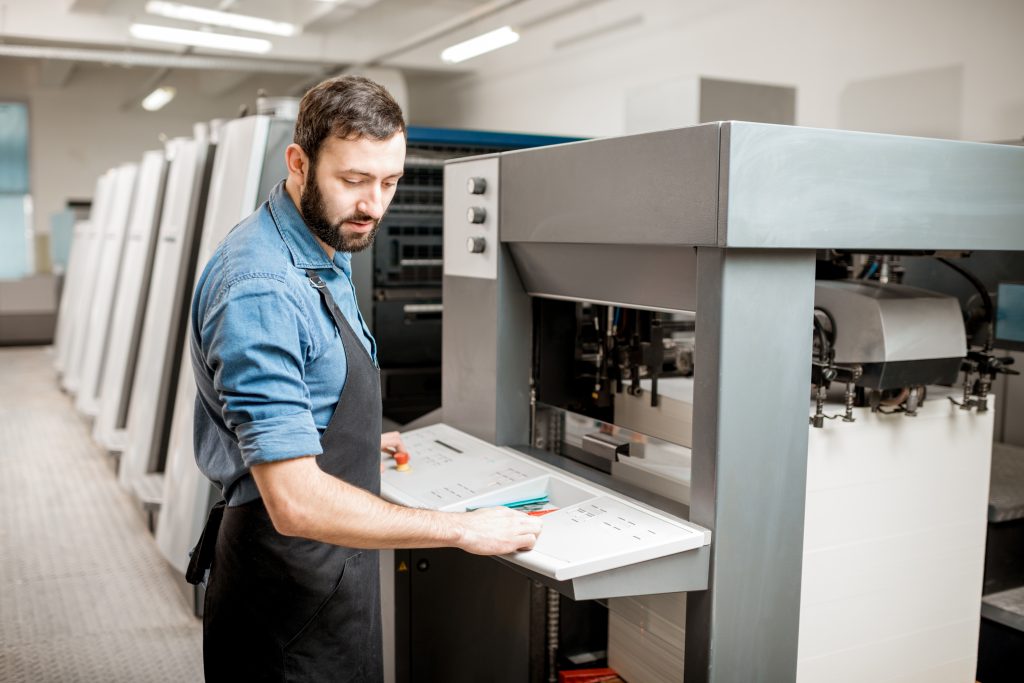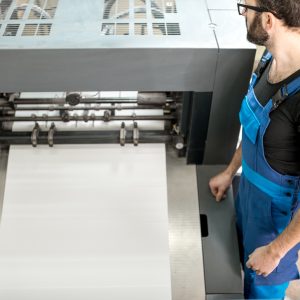Offset printing is a popular and widely used method in the printing industry. However, it is not without its challenges. Many printing projects have been ruined due to common mistakes that could have easily been avoided. If you want to ensure a successful offset printing project, it’s important to be aware of these common mistakes and take the necessary steps to avoid them.
Whether you are a seasoned professional or new to the world of printing, this article will serve as a valuable resource to help you navigate the potential pitfalls of offset printing and ensure a smooth and successful printing project. So, let’s dive in and learn how to avoid these common mistakes and achieve excellent results with your offset printing endeavors.
1. Poor Quality Of Originals
In offset printing, the quality of the originals used plays a crucial role in the final print output. Using high-quality originals ensures a professional and visually appealing print result. On the other hand, poor quality originals can have a detrimental effect on the final product, resulting in a subpar appearance.
One of the main issues with poor quality originals is low resolution. If the original image or document has a low resolution, it can appear pixelated or blurry when printed. This can significantly reduce the sharpness and clarity of the final print, making it look unprofessional and difficult to read.
Another problem that can arise from poor quality originals is blurred images. If the originals are not sharp and clear, the printed images can appear fuzzy or out of focus. This lack of definition can make the printed materials look unprofessional and unattractive.
Color inconsistencies are also common when using poor quality originals. The colors on the printed materials may not accurately match the original design, resulting in a distorted or mismatched appearance. This can be particularly problematic for businesses that rely on consistent branding and color accuracy.
To avoid these issues, it is essential to use high-quality originals when preparing print jobs for offset printing. This includes using high-resolution images and documents, ensuring sharpness and clarity, and maintaining color accuracy. By doing so, you can achieve professional and visually appealing print results that accurately represent your brand or message.
2. Incorrect Ink Coverage & Color Matching
Accurate ink coverage and color matching are crucial aspects of offset printing. When the ink coverage on a printed material is not properly adjusted, it can lead to poor print quality and unsatisfactory results. Insufficient ink coverage may result in a pale or faded appearance, making the printed materials look unprofessional and lack vibrancy.
Similarly, color mismatches can occur when the colors on the printed materials do not accurately match the original design. This can be caused by a variety of factors such as using the wrong color profile or not properly converting images to the appropriate color space. Color inconsistencies can give a distorted or mismatched appearance, which can be particularly problematic for businesses that rely on consistent branding and color accuracy.
To ensure proper ink coverage and color matching, there are a few tips to keep in mind. Firstly, it is important to use the CMYK color profile for offset printing as it is specifically designed for this printing method. Additionally, converting black and white images to grayscale can help avoid color discrepancies.
Consulting with the printer about color space and profiles is also beneficial. They can provide guidance on the specific requirements and help in achieving accurate color matching. By paying attention to these details, businesses can avoid common printing mistakes related to ink coverage and color matching and ensure high-quality prints that align with their branding and design vision.
3. Issues With The Printing Plate And Cylinder Setup
In offset printing, the setup of the printing plate and cylinder plays a crucial role in achieving high-quality prints. However, common issues can arise if the setup is not done properly.
One common problem is misalignment between the printing plate and the cylinder. This can lead to smudged or distorted prints, as the ink may not transfer accurately onto the paper. Proper alignment is essential to ensure that the image is precisely transferred onto the paper.
Another issue is inconsistent ink transfer. If the cylinder pressure is not calibrated correctly, there may be variations in the amount of ink transferred to the paper. This can result in uneven color distribution and patchy prints.
Poor image quality is also a potential problem if the plates and cylinders are not properly adjusted. Uneven pressure between the plate and cylinder can cause blurring, streaking, or even loss of detail in the printed image. Calibration and adjustment are important to achieve consistent and sharp prints.
To avoid these issues, it is essential to ensure that the printing plates are securely mounted on the cylinders and that proper alignment, calibration, and adjustment are performed. Regular maintenance and inspection of the equipment can also help identify and resolve any issues before they affect the print quality.
4. Improper Maintenance Of Rollers And Idle Rollers
Improper maintenance of rollers and idle rollers can lead to various printing mistakes and affect the overall print quality. To avoid these issues, it is essential to follow proper maintenance procedures.
Regular cleaning of rollers is crucial to remove ink buildup and debris that can accumulate over time. This buildup can negatively impact the print quality by causing streaks, smudges, or inconsistent ink transfer. Cleaning should be done using appropriate cleaning solutions and tools to effectively remove any residue.
In addition to cleaning, proper lubrication of rollers is necessary for smooth operation and to prevent roller damage. Lubrication helps reduce friction, ensuring that the rollers move effortlessly and consistently. It is important to use the recommended lubricants and follow the manufacturer’s guidelines for the frequency of lubrication.
Furthermore, idle rollers should not be neglected during maintenance. These rollers, although not directly involved in the printing process, play a crucial role in maintaining proper tension and alignment. Regular inspection and adjustment of idle rollers are necessary to prevent issues such as misalignment, wrinkling of paper, or jams.
5. Faulty Printer Software Settings
Faulty printer software settings can lead to various printing issues. One common problem is incorrect print sizing, where the output doesn’t match the desired dimensions. This can result in cropped content or distorted images. Another issue stems from improper print resolution settings, leading to blurred or pixelated prints.
Furthermore, incorrect print orientation settings can cause upside-down or sideways prints. Additionally, the wrong paper type or media settings can affect the ink absorption and drying time, resulting in smudged or smudged prints.
To address these problems, it is crucial to check and adjust the printer software settings. Ensure that the print preferences, such as page size, resolution, orientation, and paper type, are correctly configured. Additionally, verify that the printer queue is clear before starting a print job to avoid issues like print jams or multiple copies being printed unintentionally.
Updating the printer driver is also essential. Outdated or incompatible printer drivers can cause printing problems, such as incorrect color reproduction or spotty prints. Regularly check for driver updates from the printer manufacturer’s website and install them to ensure compatibility and improved performance.

Conclusion
In conclusion, avoiding common offset printing mistakes is crucial to ensuring high-quality and efficient print jobs. By addressing issues such as incorrect print orientation settings, paper type, and printer software settings, businesses can avoid costly errors such as upside-down or smudged prints.
Investing in trained in-house designers is essential for achieving optimal results. These professionals have the expertise to properly configure print preferences and manage printer software settings. By working with a knowledgeable print team, companies can save time and costs associated with reprints and troubleshooting.


